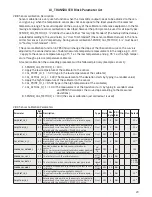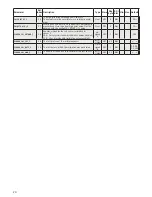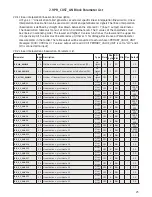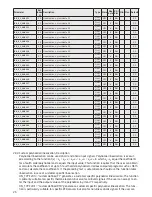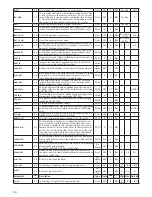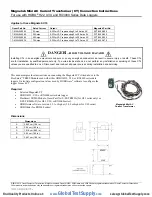
36
5.0 Link Active Scheduler (LAS)
5.1 Introduction:
PR5350 features a LAS function which is only available in Fieldbus Foundation installations.
Please note that the LAS function has not been specified by the Profibus Nutzerorganisation
and is therefore not available in Profibus installations.
5.2 Overview
5.3 Description
All links have one and only one Link Active Scheduler (LAS). The LAS operates as the bus arbi-
ter for the link. The LAS does the following:
• recognizes and adds new devices to the link.
• removes non-responsive devices from the link.
• distributes Data Link (DL) and Link Scheduling (LS) time on the link. Data Link Time is a
network-wide time periodicallydistributed by the LAS to synchronize all device clocks on
the bus. Link Scheduling time is a link-specific time represented as an offset from Data
Link Time. It is used to indicate when the LAS on each link begins and repeats its sched-
ule. It is used by system management to synchronize function block execution with the
data transfers scheduled by the LAS.
• polls devices for process loop data at scheduled transmission times.
• distributes a priority-driven token to devices between scheduled transmissions.
Any device on the link may become the LAS, as long as it is capable. The devices that are ca-
pable of becoming the LAS are called link master devices. All other devices are referred to as
basic devices. When a segment first starts up, or upon failure of the existing LAS, the link mas-
ter devices on the segment bid to become the LAS. The link master that wins the bid begins
operating as the LAS immediately upon completion of the bidding process. Link masters that
do not become the LAS act as basic devices. However, the link masters can act as LAS backups
by monitoring the link for failure of the LAS and then bidding to become the LAS when a LAS
failure is detected.
Only one device can communicate at a time. Permission to communicate on the bus is con-
trolled by a centralized token passed between devices by the LAS. Only the device with the
token can communicate. The LAS maintains a list of all devices that need access to the bus.
This list is called the “Live List.”
Two types of tokens are used by the LAS. A time-critical token, compel data (CD), is sent by the
LAS according to a schedule. A non-time critical token, pass token (PT), is sent by the LAS to
each device in ascending numerical order according to address.


